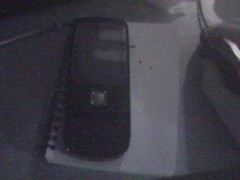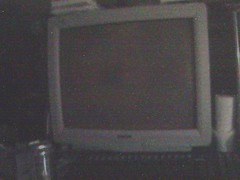I've managed to get tbeta to work with openframeworks the C++ framework for touch interfacing. But interactivity is an issue. I learnt openGL 2.0 a few years ago before I went to University, but my understand is a little to basic.
I have to find a way of allowing the user to switch modes (To do different things), though I could have this interactivity placed onto a key on the keyboard. But even if I did I wouldn't be sure how to change modes, as this involves looping and use of boolean (true false) arguments...which I used to get wrong.
Hopefully I'll find some working code for an image loader, or something similar soon. I will post more when that time comes.
Wednesday, 11 February 2009
Tuesday, 10 February 2009
Surface...more important than I thought
Program tests were good today, albeit it limited. I now see why the surface (Material) is so important. The surface material has to allow a finger to slide over it with ease (Acrylic provides too much friction) and currently I am interfacing directly onto the acrylic. I even tried gloves to get that down, but they didn't displace the IR field.
So I need to come up with a few project flows and then try working on an application to bring together a few features. As always the community is fantastic. I'm now using openframeworks with tuio which is part of TBeta's blob tracking element. This is what allowed me to interface with the software running on the PC.
Testing all this will be difficult in the time I have available, but I hope to get a program up and running soon for show.
So I need to come up with a few project flows and then try working on an application to bring together a few features. As always the community is fantastic. I'm now using openframeworks with tuio which is part of TBeta's blob tracking element. This is what allowed me to interface with the software running on the PC.
Testing all this will be difficult in the time I have available, but I hope to get a program up and running soon for show.
It works!...again
Right, so I've fixed the first programming problem. First of all I should say that the screen is working properly now and I can configure it properly as well. I am still missing a projector, which isn't great and I am also missing a laptop for portability, but that can wait. One less thing to worry about though.
The hardware interfaces with the infra camera, which is interpreted by the software on the computer. I had already been notified of an API framework (Call it what you will) called openFrameworks by developers at Autodesk and so I went to check it out. To cut a long story short I chose this as my end solution. I used tbeta and mtmini software to configure the hardware and test the principles of infra red hardware, before progressing.
Yesterday I found out that I couldn't just interface directly with openFrameworks (Which is built in C++) without having something else handle the multi touch interaction, which was being picked up by the infra red camera. Thankfully the community is fantastic and someone had already had this problem.
Tbeta software handles multi touch movements on screen and configures them and it has a facility to send these movements out through a localhost service (This basically picks up the movement information sent out by tbeta and waits for another application to ask for it) using a specific port. So this was the fix to my problem, because it would do all the hard work for me...famous last words! haha
Well it wasn't so bad in the end. After a full day of tweaking and trying to figure out why the libraries weren't linking properly in Code:Blocks (The C++ shell I am using), I finally got it to work. But I had to update the framework, the addons that I needed to get it to work and my project links.
So now I have a lovely blank window, but hope to have paint or something much more interesting to show for it, very soon!
The hardware interfaces with the infra camera, which is interpreted by the software on the computer. I had already been notified of an API framework (Call it what you will) called openFrameworks by developers at Autodesk and so I went to check it out. To cut a long story short I chose this as my end solution. I used tbeta and mtmini software to configure the hardware and test the principles of infra red hardware, before progressing.
Yesterday I found out that I couldn't just interface directly with openFrameworks (Which is built in C++) without having something else handle the multi touch interaction, which was being picked up by the infra red camera. Thankfully the community is fantastic and someone had already had this problem.
Tbeta software handles multi touch movements on screen and configures them and it has a facility to send these movements out through a localhost service (This basically picks up the movement information sent out by tbeta and waits for another application to ask for it) using a specific port. So this was the fix to my problem, because it would do all the hard work for me...famous last words! haha
Well it wasn't so bad in the end. After a full day of tweaking and trying to figure out why the libraries weren't linking properly in Code:Blocks (The C++ shell I am using), I finally got it to work. But I had to update the framework, the addons that I needed to get it to work and my project links.
So now I have a lovely blank window, but hope to have paint or something much more interesting to show for it, very soon!
Monday, 9 February 2009
The acrylic frame
Well this weekend I finished the frame that will hold the acrylic screen (See picture). It cost me about £5 from the timber yard + alterations and cutting. If I had more time I would build a table like so many others have, but I don't.
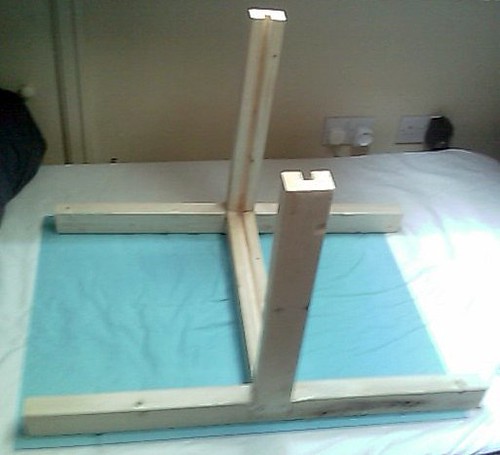
I would have got more done but I was working on a novel this weekend, which I'm glad to say is finished, but I am currently re-drafting (see Dominic Took.com)
Today I am going to re-calibrate the screen using the software provided by Tbeta which interfaces with a flash application to provide interactivity in the form of a multi touch screen (It's pretty neat!). I hope to get a half decent video up on youtube sometime soon.
I will let you know how I get on...

I would have got more done but I was working on a novel this weekend, which I'm glad to say is finished, but I am currently re-drafting (see Dominic Took.com)
Today I am going to re-calibrate the screen using the software provided by Tbeta which interfaces with a flash application to provide interactivity in the form of a multi touch screen (It's pretty neat!). I hope to get a half decent video up on youtube sometime soon.
I will let you know how I get on...
Thursday, 5 February 2009
Optimised and Working!
The electrical tape worked!
After a lot of numerous changes today, I've managed to optimise all the blobs so they work effectively. I can drag a finger over the surface and get blobs picked up effectively. I can resize images and rotate the 2d global desk using my fingers as well. So all the basic functionality I need is working (Yipee!)
I do have some videos but they're very large so I'm attempting to re-encode them via After Effects, if it works I will post the youtube videos.
I intend to try and build a contraption to keep the surface still, sometime soon, it's rather heavy at 2-3 kg's, so it does need something fairly robust. I also need to get a projector to make interaction with blobs complete and fully intuitive.
More updates will follow I bet...
After a lot of numerous changes today, I've managed to optimise all the blobs so they work effectively. I can drag a finger over the surface and get blobs picked up effectively. I can resize images and rotate the 2d global desk using my fingers as well. So all the basic functionality I need is working (Yipee!)
I do have some videos but they're very large so I'm attempting to re-encode them via After Effects, if it works I will post the youtube videos.
I intend to try and build a contraption to keep the surface still, sometime soon, it's rather heavy at 2-3 kg's, so it does need something fairly robust. I also need to get a projector to make interaction with blobs complete and fully intuitive.
More updates will follow I bet...
Labels:
multi touch,
multi touch surface,
progress,
touch surface
Blob tests...
The set up works, but its configuration is a little unstable. But there are a few fixable reasons for this. I tested the blobs first of all (Blobs are impressions made onto the acrylic surface (The touch surface) which disrupt the infra red field.) So the first test was successful, I managed to create blobs just by using my fingers on the surface, however I had to use the opposite to the side I expected, to achieve this...which still has me a little confused.
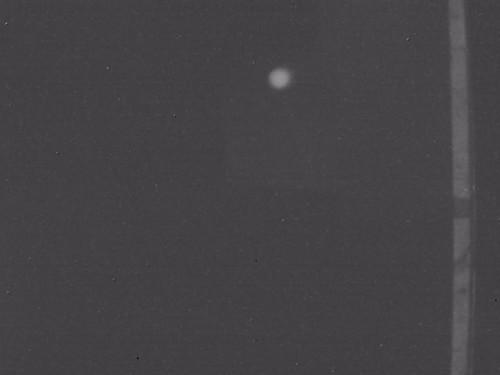
That was last night, today I've been trying to re-configure the hardware. I set everything up on a more stable surface, though I have nothing built to hold the screen in place...which is going to become annoying. I've found out today that the LED strip at the edge is interfering with the software picking up the blobs effectively, without that I can't really go forward.
So now I am going to try taping off the LED bleed with electrical tape.

That was last night, today I've been trying to re-configure the hardware. I set everything up on a more stable surface, though I have nothing built to hold the screen in place...which is going to become annoying. I've found out today that the LED strip at the edge is interfering with the software picking up the blobs effectively, without that I can't really go forward.
So now I am going to try taping off the LED bleed with electrical tape.
Wednesday, 4 February 2009
Moment of truth!
The surface is now complete, the first image shows the fabric stabiliser stretched over the surface of the acrylic and the projection fabric stretched on top of that layer. Now I'm ready to add the LED's and tonight I will know if all the parts, (Webcam, surface, software) actually work properly.
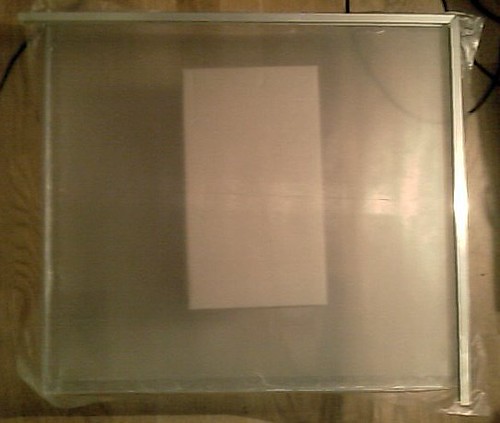
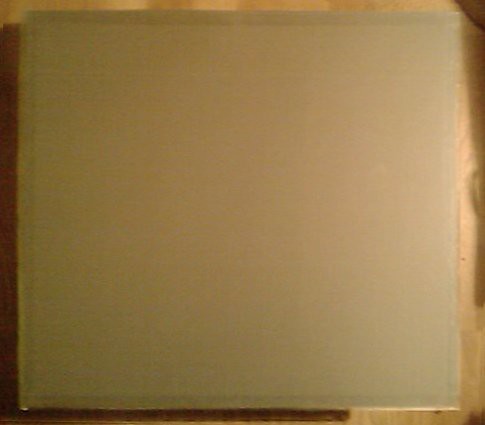
It's the moment of truth...


It's the moment of truth...
Tuesday, 3 February 2009
LED Test = Green Light, Surface to
Well I've blacked out the room I'm making this in (So that the camera only picks up the infra red light from the touch screen and nothing else). I've started to make the surface, which I'm glad to say is coming along better than expected.
So now I'm about to put another layer of fabric onto the acrylic board which makes up the touch interface. It's pretty heavy at 10mm's and only about 25 inches wide (If you think about it like a monitor screen). The reason I mention it is because being so heavy isn't good for portability, but these touch screens should be mounted inside something, this is merely for test purposes.
Once I've added the first and second layer of fabric I'll be ready to add the LED's, which I'm glad to say, work!

So now I'm about to put another layer of fabric onto the acrylic board which makes up the touch interface. It's pretty heavy at 10mm's and only about 25 inches wide (If you think about it like a monitor screen). The reason I mention it is because being so heavy isn't good for portability, but these touch screens should be mounted inside something, this is merely for test purposes.
Once I've added the first and second layer of fabric I'll be ready to add the LED's, which I'm glad to say, work!

It Worked!
Infra red camera!!
I've finally got all the parts, LED strip, camera, acrylic, fabric for compliant surface and other little bits. I found out yesterday that the camera drivers were very poor! I'm guessing Japanese or Chinese make and the infra red feature was actually a graphical feature, not embedded into the camera as I had first expected.
But by a stroke of luck I have just prised out the infra red lense see image. In the end I had to crack the lense, which was very brittle, to get it out. So third time lucky in the end!! (See pic)
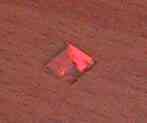
Now I just need to add in the infra red filter, which I believe can be put together from a floppy disk magnetic strip...or exposed negatives with no picture. I did have these but they aren't quite the right type, so I am going to use the floppy disk magnetic strip again.
With that cut and placed into the camera, I should finally have an infra red camera. Will update soon, if I manage to get the infra red LED's working.
But by a stroke of luck I have just prised out the infra red lense see image. In the end I had to crack the lense, which was very brittle, to get it out. So third time lucky in the end!! (See pic)

Now I just need to add in the infra red filter, which I believe can be put together from a floppy disk magnetic strip...or exposed negatives with no picture. I did have these but they aren't quite the right type, so I am going to use the floppy disk magnetic strip again.
With that cut and placed into the camera, I should finally have an infra red camera. Will update soon, if I manage to get the infra red LED's working.
Subscribe to:
Posts (Atom)

